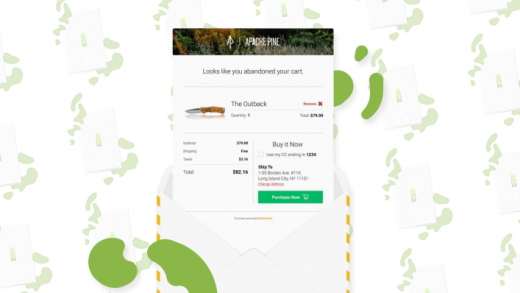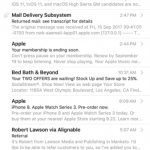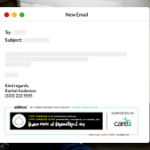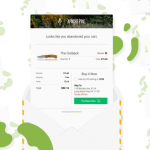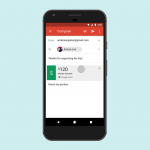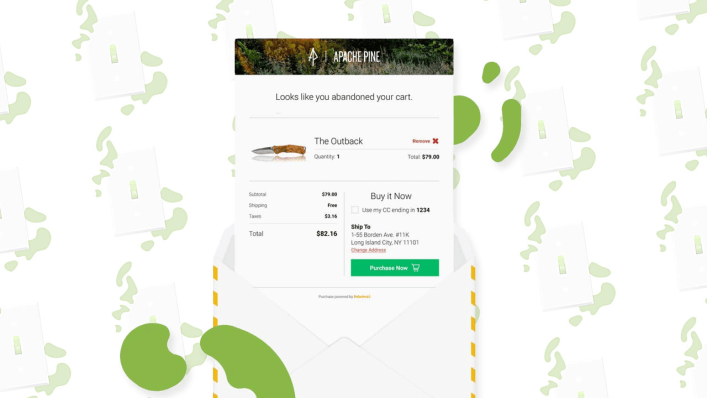This Email Startup Wants You To Go Shopping In Your Inbox
A few years ago, buy buttons were hailed as the next big thing in social commerce. That didn’t last long: Twitter did away with its buy button this January, about two years after introducing the feature, and Facebook, too, axed its efforts soon after launch. Pinterest and Instagram are still chugging along for now, but it’s not clear yet whether those efforts have proven successful.
Perhaps this is because people don’t actually want to shop via social media, at least not yet; maybe the payment interface is lacking, or consumers approach social media as platforms for browsing. Chances are many people aren’t even aware of buy buttons.
But what about shopping via email? Everyone uses email. In fact, you likely already use email—in tandem with social media—to keep tabs on your favorite brands. That’s where Rebel comes in. The interactive email startup was originally launched as RebelMail in 2014, with the intent of making newsletters better for subscribers and allowing companies to track how consumers interact with their emails.
An eBay newsletter that employs RebelMail’s technology, for example, allows subscribers to take quizzes within the body of the email, while Home Depot customers can now fill out reviews for products they’ve purchased without leaving their email—a change that Rebel founder Joe Teplow says has nearly doubled the number of reviews submitted. In terms of e-commerce, RebelMail also offered the ability to “add to cart.” Teplow cited the example of an Old Navy email that would let customers view photos of a product, choose the desired color and size, and then add the item to their shopping bag.
“We’ve always said this is great—this is one way of reducing friction,” Teplow said. “But what if you could check out entirely in the email?”
Today, Rebel is introducing RebelShop, which does exactly that by granting in-email checkout. At launch, RebelShop will only be available to Shopify-powered e-commerce platforms and is focusing on abandoned cart emails—those pesky emails that remind you about items you left in your shopping cart without purchasing. If this seems disconcerting from a security standpoint, RebelShop only accepts credit card information over secure connections, is PCI compliant, and provides additional security features like email forwarding protection, which means its emails are no longer accessible if forwarded.

If the aesthetics of shopping via email don’t seem all that appealing, that’s no surprise. Email isn’t sexy—something Teplow readily acknowledges. (Even finding engineering talent, Teplow says, has been more difficult, given the siren call of more attractive fields like AI and big data.) But email newsletter open rates, along with the revenue opportunity, tell a different story.
“When we were just getting started, everyone was like, ‘Really, you’re going to build a company in email? Email is dying, it’s over,’” Teplow said. “But email generates 11 times the revenue of every social network combined. It’s the last owned channel for brands. If you want to run an ad on Facebook, you’re going to pay for your distribution. That’s just how it works. If you have an email list . . . it takes time to build, but once you do build it, it’s your list.”
From a technical standpoint, making emails interactive had its challenges. “Javascript—the front end language that powers most of the web—isn’t possible in email,” Teplow told Fast Company. “Without it, you’re severely limited. And then on top of that, every email client renders differently.” Often, those email clients also look different across devices—Gmail, for example, renders differently on iOs, Android, and desktop—which meant Teplow and his team have to test their product on every device in the market.
“We have to literally own every single phone and device,” Teplow says. “There are some services out there that will show you what your email looks like in different clients with a screenshot, but ours are interactive, so we actually need to be able to play with it.”
But one of the biggest challenges, according to Teplow, is convincing email marketers—who have long worshipped at the altar of click-through rates—that keeping people in an email for longer, without necessarily encouraging them to click through, is a good idea.
“It takes a really innovative marketer to recognize that their job was never to generate click-through,” Teplow says. “It was to generate meaningful impact for the business that they’re working for. And maybe you don’t have to generate a click-through to make that happen.”
Could interactive email startup Rebel’s new in-email checkout product turn email into a better platform for e-commerce than social media?
A few years ago, buy buttons were hailed as the next big thing in social commerce. That didn’t last long: Twitter did away with its buy button this January, about two years after introducing the feature, and Facebook, too, axed its efforts soon after launch. Pinterest and Instagram are still chugging along for now, but it’s not clear yet whether those efforts have proven successful.
Fast Company , Read Full Story
(19)

